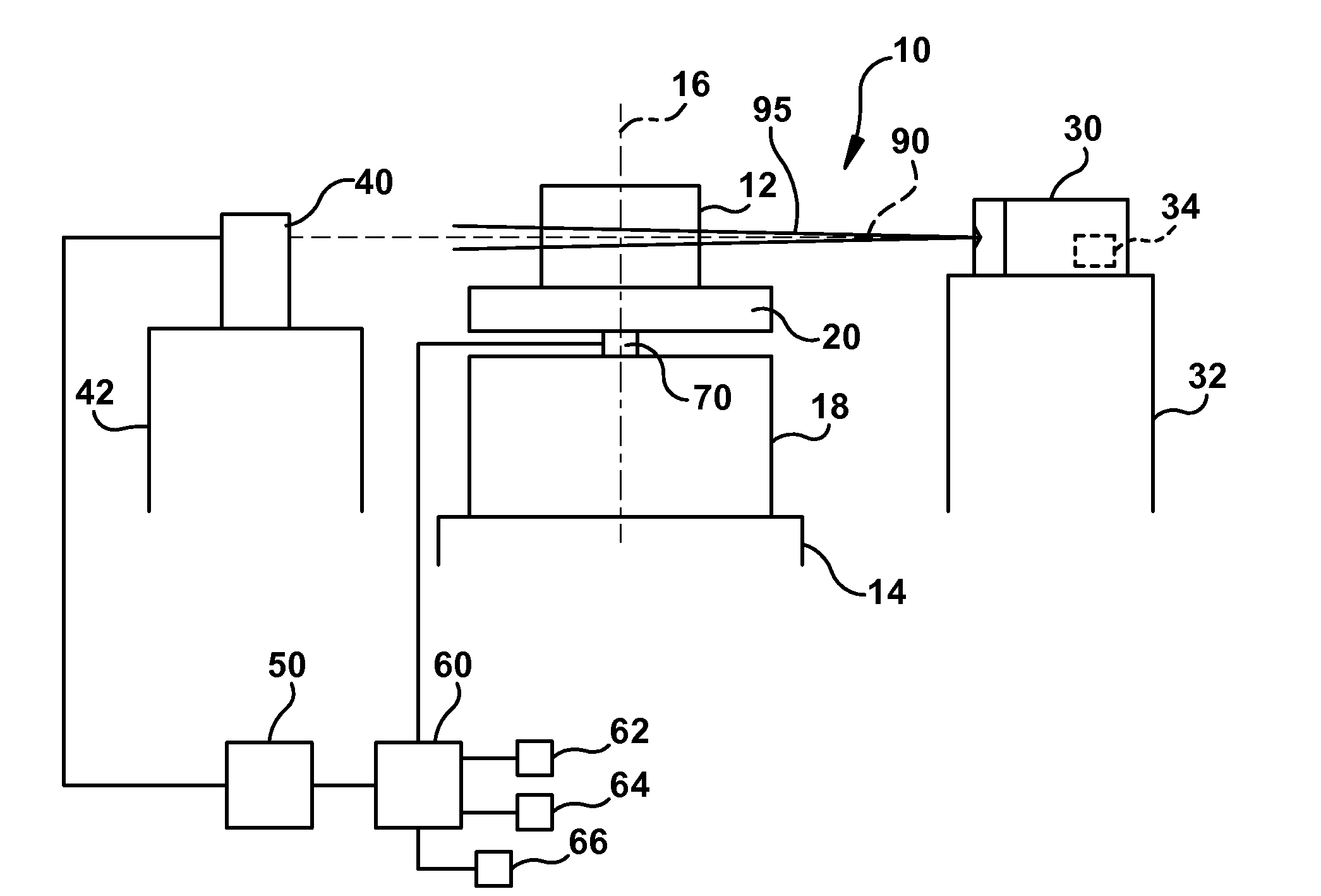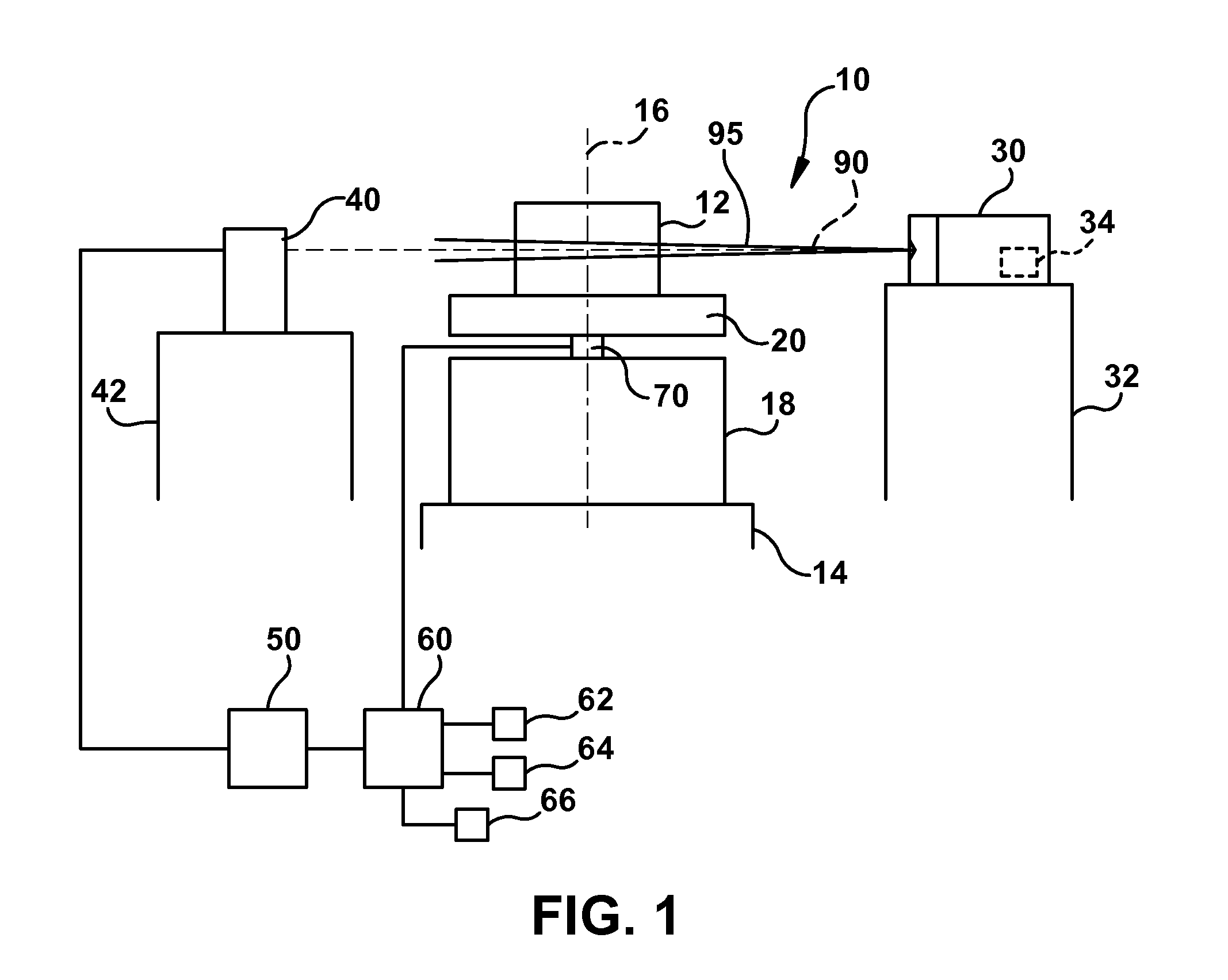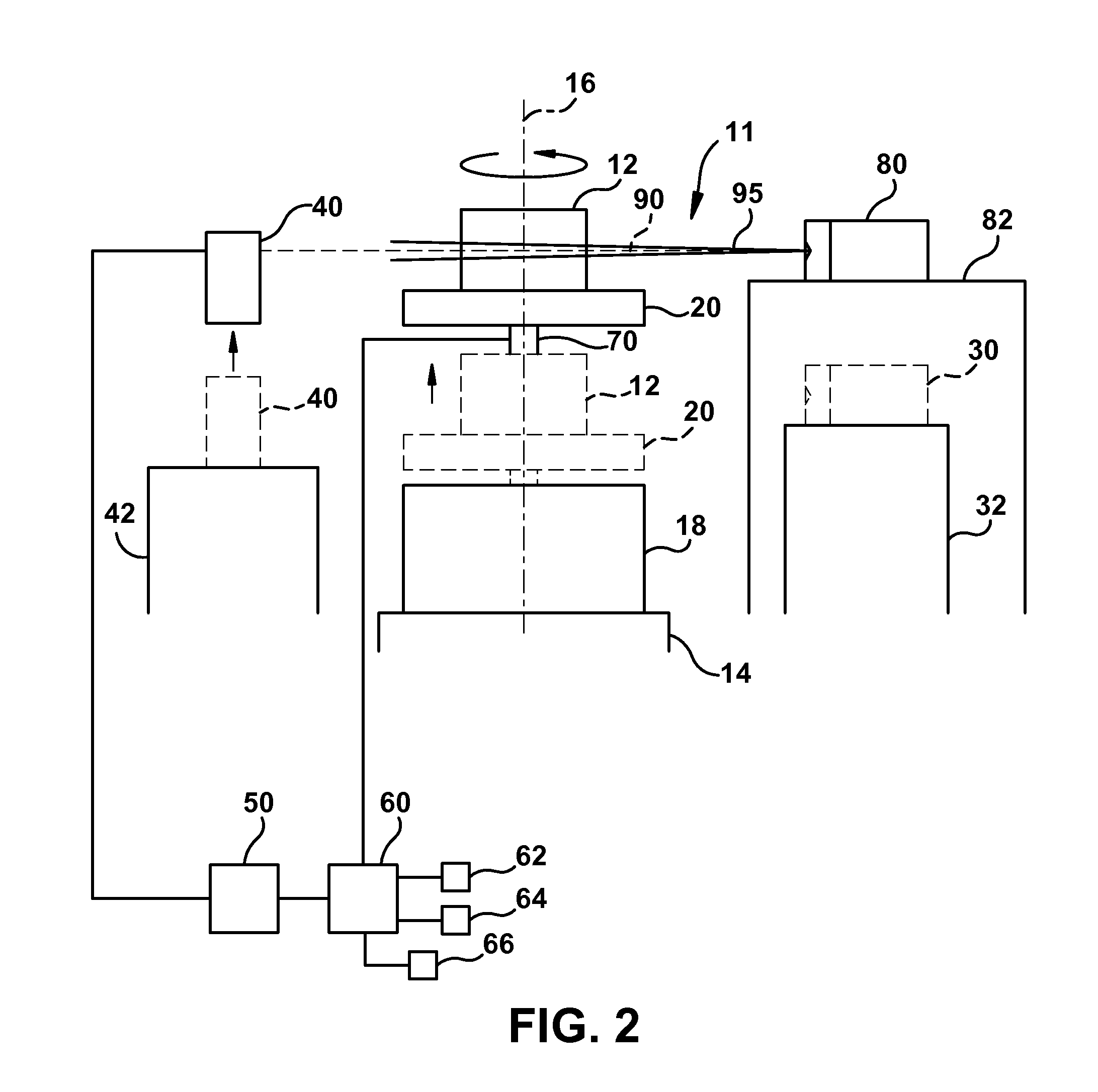Xrd-based false alarm resolution in megavoltage computed tomography systems
a computed tomography and megavoltage technology, applied in the field of computed tomography (“ ct”)based threat detection systems, can solve the problems of generating a significant number of false alarms, high cost of both operations, and many problems unsolved, so as to increase the detection rate, increase the signal-to-noise ratio, and extend the moment range
- Summary
- Abstract
- Description
- Claims
- Application Information
AI Technical Summary
Benefits of technology
Problems solved by technology
Method used
Image
Examples
Embodiment Construction
[0029]Specific configurations and arrangements of the claimed invention, discussed below with reference to the accompanying drawings, are for illustrative purposes only. Other configurations and arrangements that are within the purview of a skilled artisan can be made without departing from the spirit and scope of the appended claims.
[0030]CT-Based Threat Detection
[0031]FIG. 1 is a schematic illustration of a first threat detection system 10, which is configured to scan an object 12, such as a shipping container, a piece of baggage, and the like, to identify the contents of and / or determine a type of one or more materials contained in object 12.
[0032]In one embodiment, the first threat detection system 10 is a Megavolt CT-based threat detection system, such as that previously disclosed in co-pending, related US Patent Application Publication: 2008-0170655 A1, filed on Jan. 17, 2007. However, any suitable CT-based threat detection system may be used.
[0033]The object 12 rests on a mov...
PUM
| Property | Measurement | Unit |
|---|---|---|
| atomic number | aaaaa | aaaaa |
| angle | aaaaa | aaaaa |
| atomic number | aaaaa | aaaaa |
Abstract
Description
Claims
Application Information
 Login to View More
Login to View More - R&D
- Intellectual Property
- Life Sciences
- Materials
- Tech Scout
- Unparalleled Data Quality
- Higher Quality Content
- 60% Fewer Hallucinations
Browse by: Latest US Patents, China's latest patents, Technical Efficacy Thesaurus, Application Domain, Technology Topic, Popular Technical Reports.
© 2025 PatSnap. All rights reserved.Legal|Privacy policy|Modern Slavery Act Transparency Statement|Sitemap|About US| Contact US: help@patsnap.com



